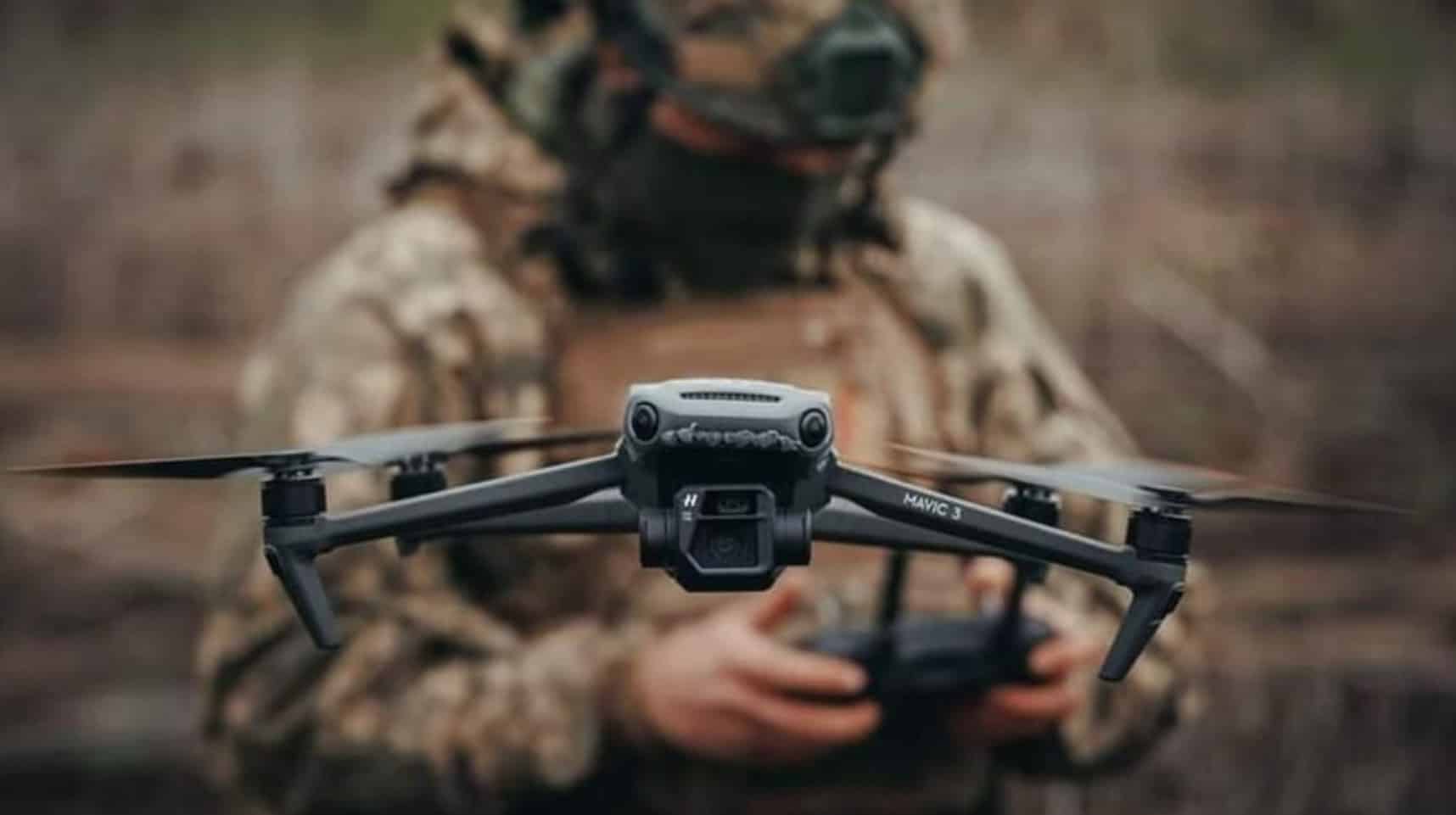Ukraine Faces a Drone Crisis as China Halts DJI Mavic Sales: Can Domestic Alternatives Fill the Gap?
In 2025, drones are as iconic—and essential—in Ukraine’s defense as the legendary tractors of 2022 or the Bayraktar song that echoed across social media. As the war enters its fourth summer, Ukraine faces a crisis: China’s abrupt, politically-charged halt on DJI Mavic drone sales, a move threatening both the country’s military efficacy and the inventive spirit of its drone “IT Army.” What is the significance for the battlefield, Ukrainian innovators, and those depending daily on the hum of Mavics? Let’s unravel the story.
1. The DJI Mavic: From Hobby Gadget to Battlefield Essential
In pre-2022 Kyiv, mentioning the DJI Mavic would likely conjure images of wedding photographers, travel bloggers, or possibly neighborhood kids flying circles over the Dnipro river. Fast forward to 2025, and the Mavic has become Ukraine’s Swiss Army knife of warfare—serving roles from reconnaissance and precision bombing to search-and-rescue and even meme warfare (who can forget “drone drop” TikToks?).
Why is the Mavic so valuable?
- Affordability: Less costly than military drones, enabling mass use.
- Adaptability: Easily modified; Ukrainian engineers rigged them with makeshift bomb drops using 3D printers and fishing line.
- Reliability: Performs well in harsh conditions with stable controls and video.
- Availability: Until recently, widely obtainable via global retailers and volunteer channels.
This changed in May 2025 when China suddenly stopped DJI drone and component sales to Ukraine and much of Europe, while continuing supply to Russia.
2. China’s Strategic Drone Embargo: The Geopolitical Gameboard
On May 29, Ukrainian President Volodymyr Zelensky stated: “Chinese Mavic is open for Russians but closed for Ukrainians.” This action isn’t just a logistical issue; it reflects a strategic divide in global drone supply.
Key facts:
- China leads the global drone market: More than 70% of consumer and “dual-use” commercial drones, especially those under $5,000, originate from China.
- Mavic series used by both sides: Although designed for photography, the Mavic 3 Pro and Mavic 4 Pro’s price and adaptability made them vital to Ukraine’s drone fleet.
- Component restrictions: Beyond drones, key parts like high-torque magnets and flight controls are restricted, affecting both assembly and repair.
China’s Position:
- Officially neutral: The Chinese Foreign Ministry claims they aren’t supplying “lethal weapons” and are advocating peace talks.
- In practice: There’s clear evidence of Chinese components and drones heading to Russia, while sales to Ukraine are blocked—a policy change Western governments see as indirect support for Moscow’s war effort.
3. On the Ground: Ukraine’s Drone Wall and its Impact
Ukraine’s “drone wall” strategy—using inexpensive drones to provide layered defense and persistent offense—has stymied Russian advances and transformed modern warfare.
Drone Warfare by the Numbers:
- Casualties: Drones now account for approximately 70% of battlefield deaths on both sides, a major shift from artillery duels in 2022-23.
- Economic impact: From January to May 2025, Ukrainian drone strikes caused over $10 billion in damage to Russian targets, including $1.3 billion in direct infrastructure losses and $9.5 billion from logistics and supply chain disruptions.
- Cost-effectiveness: Ukraine’s drone tactics are estimated to be 15 times more cost-effective than Russia’s, due in part to their use of inexpensive, mass-produced drones.
Adaptation and Innovation:
When artillery supplies dwindled and Western aid slowed, drones filled the gaps—enabling everything from deep-strike sabotage to last-minute resupplies. Ukrainian coders and engineers worked tirelessly, devising new tactics and open-source software to bypass jamming and optimize swarm coordination.
But with DJI drones cut off, what next?
4. The Search for Domestic and Alternative Solutions
Can Ukraine make its own drones?
The dream: a self-reliant drone industry, free from political pressures. The reality: forming a DJI-class drone ecosystem is challenging, and quick supply is essential.
| Solution Type | Pros | Challenges |
|---|---|---|
| *Ukrainian-made quadcopters* | Customizable, local supply, tailored software; some companies already exist | Higher cost, lower volume, still rely on imported parts |
| *Western alternatives (Parrot, Skydio, Autel)* | Often more secure, some military ready, growing support from allies | Higher price, limited availability, not as cost-effective as Mavic |
| *FPV drones (First Person View)* | Ultra-cheap, easy to assemble, used for single-use kamikaze roles | Require skilled pilots, limited range versus Mavic |
| *DIY projects & open-source hardware* | Full transparency, rapid adaptation, local control | Scalability and ruggedness are a challenge |
| *3D printing, local repair networks* | Creative use of existing Mavic parts, rapid small-batch repair | Vulnerable to parts shortages as embargo deepens |
Case Study: Ukrainian Drone Startups
Startups like “Skyton,” “Ukrspecsystems,” and “AeroDrone” are crafting competitive UAVs for both military and civilian use. Their drones boast enhanced encryption, improved resistance to Russian jamming, and feature “made in Ukraine” pride.
Expert tip: According to Ukrainian engineers, the key bottleneck isn’t the airframe or software—it’s the microelectronics and precision magnetics, mainly produced in China.
5. International Response and Aid
As China’s embargo intensifies, Western governments are stepping in:
- Sanctions: The European Union and US have sanctioned several Chinese companies assisting Russia’s drone industry.
- Boosting alternate supplies: Governments and grassroots volunteer groups are sending Western drones, FPV kits, and spare parts to Ukraine.
- “Drone Lend-Lease” proposals: Brussels and Washington are discussing subsidies for Western suppliers and investment in Ukrainian production lines.
6. On the Frontline: Testimonies and Implications
Oleksandr, drone operator, Kharkiv region: “You fly 10 Mavics on Monday; by Friday, five remain and two of those are half-broken. Losing a drone means losing eyes and hands for your squad. We need alternatives, but nothing is as simple or robust as the Mavic.”
Volunteer supply hub coordinator, Lviv: “We bought Mavics on Amazon, delivered within a week. Now it’s months, if it happens at all, and prices have doubled. We’re teaching FPV construction from scratch. The learning curve is steep, but it’s necessary.”
7. Expert Analysis: What’s Next for Ukraine’s Drone War?
- Short term: Ukraine will experience a sharp drop in drone efficacy. Black-market and volunteer imports may somewhat fill the gap but at higher expense and risk.
- Medium term: Domestic drone production will accelerate, focusing on modular, repairable designs. More use of FPV drones for attack and Western systems for surveillance is expected.
- Long term: The crisis acts as a catalyst for Ukraine’s drone industry. However, it also warns the world: reliance on a single supplier for civilian tech can pose a national security risk overnight.
8. Practical Tips: How Drone Users and Businesses Can Adapt
- Diversify procurement: Avoid reliance on a single supplier. Mix Chinese, Western, and local solutions.
- Invest in training: FPV drones necessitate skilled pilots; invest in simulators and workshops.
- Support domestic innovation: Collaborate with Ukrainian startups and educational institutions; they need feedback in addition to funding.
- Embrace modularity: Opt for drones that can be swiftly repaired with locally available parts.
- Advocate for policy change: Join initiatives lobbying for Western governments to fund drone technology R&D in Ukraine.
9. A Human—and Humorous—Perspective
Ukrainians have a talent for transforming crises into opportunities—and memes. The “Great Mavic Shortage” has entered the pantheon of legendary wartime jokes, with social media portraying the search for functional drones as “Stalker” quests or “S.T.A.L.K.E.R.” game missions—except with real lives at stake.
The ingenuity, resolve, and humor of drone operators, engineers, and volunteers ensure Ukraine is still in the fight. One popular meme reads, “Where there’s a will, there’s a way—and probably a 3D-printed part.”
10. Conclusion: Resilience in the Face of Uncertainty
China’s suspension of DJI Mavic sales has highlighted the fragility of high-tech supply chains in wartime conditions. For Ukraine, it represents both a significant challenge and a turning point. The country’s response—blending state-driven innovation, volunteer commitment, and international cooperation—may transform this crisis into a springboard for a fully independent and world-class drone industry.
For international observers, the lesson is unmistakable: drones are not mere toys. In 2025, they are as strategic as tanks—and often much cheaper to replace.
If you wish to support Ukraine’s drone operators, consider donating to reputable volunteer organizations, advocating for open technology, or—if involved in the field—collaborating with local innovators. The dynamics of the drone war may be shifting, but one constant remains: necessity is the mother of invention.













